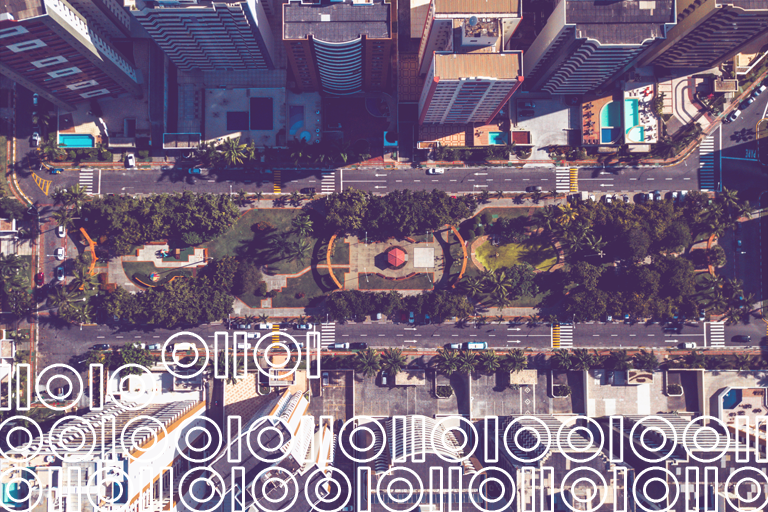
Spatial Analytics 101: Benefits, Use Cases, and Solutions

Location intelligence (LI) has become part of our everyday lives. It’s so ingrained, in fact, that it’s at the point where we’re using LI all the time without even thinking about it.
How often are you using a fitness tracker, for example, or firing up your mapping platform of choice for step-by-step driving directions? It’s almost hard to remember a time when we didn’t have these abilities quite literally at our fingertips.
That’s why using location to analyze your business data just makes sense. Leveraging data visualizations can reveal hidden patterns and relationships that move users from “what happened” to “how,” “why,” and “in what context.” This all leads to better insights and decision-making.
That’s what makes spatial analytics so important. Let’s explore more on what spatial analytics is, why it matters, and what you need to get started and deliver the best results?
What Is Spatial Analytics?
Spatial analytics is the process of conducting an analysis of data with a geographic or spatial component. It combines internal, external, and third-party data for analysis and visualization while considering the geographical context in which data is collected.
Spatial analytics solutions make it easy to combine, organize, manage, and query data from across data silos. This approach is complemented by highly intuitive visualization which works across devices, meaning more users across your organization can gain valuable insights.
When you go beyond charts and spreadsheets to reveal spatial relationships hidden in your data, you gain the context and business insights you need for accurate, fast, and confident decision-making.
Why Is Spatial Analytics Important?
Let’s take a moment to look at the bigger picture.
According to the 2023 Data Integrity Trends and Insights Report, published in partnership between Precisely and Drexel University’s LeBow College of Business, 77% of data and analytics professionals say data-driven decision-making is the top goal of their data programs.
But less than half (46%) rate their ability to trust data for decision-making as “high” or “very high.” That’s a problem – because when it comes to data-driven decisions, trust is everything.
Trusted data needs data integrity – data with maximum accuracy, consistency, and context – to empower fast, confident decisions that help you add, grow, and retain customers, move quickly and reduce costs, and manage risk and compliance. And as we’ve started to cover here, spatial analytics is a key part of achieving that critical element of context.
Site selection
Let’s take site selection, for instance. When deciding where to open your new restaurant, bank branch, or storefront, there’s a lot of information that needs to be considered. To name a few:
- What are the neighborhood demographics?
- Is there competition close by?
- How convenient is a given location – is it close to major roads or public transportation?
This is a prime example of a strategy in need of support from demographics and points of interest datasets – to tell you more about people and places – and spatial analytics solutions – to let you analyze how those factors can impact store performance.
Once your business is up and running, it doesn’t stop there. Spatial analysis can be used to continuously create actionable insights around site performance to help you make decisions that boost profitability.
Better targeting and customer experiences
Customer expectations are at an all-time high … and growing. They expect personalized, streamlined experiences, and they don’t have much tolerance for anything less.
Luckily, since all customers exist in the context of a physical location, spatial analytics tools can provide a location-based, contextualized view that helps you unlock hidden relationships. That means you can create accurate, in-depth customer profiles and make hyper-personalization possible, and
- Customize marketing campaigns
- Target desirable customers
- Personalize experiences to meet expectations
Watch Webinar
MapInfo Pro v2023: The Next Dimension in Spatial Analytics
Unlock the next dimension in spatial analytics with MapInfo Pro v2023. Watch this presentation from the MapInfo Pro experts as they discuss and demonstrate the new functionality.
Spatial Analytics Use Cases by Industry
Now that we’ve covered quite a bit on the “what” and “why” of spatial analytics, you may be starting to think about the benefits it could bring to your business. For inspiration, let’s take a look at some common examples across industries.
- Telecommunications:
- Strengthen and automate network analytics by integrating spatial analysis and cloud-native geoprocessing– giving you a more sophisticated view of your assets and subscribers so you can:
- improve service to your customers
- close the digital divide in underserved communities
- reduce churn and increase reliability
- Ensure competitive advantage through better planning for network expansion and maintenance – optimizing the placement of 5G cell towers, for example.
- Strengthen and automate network analytics by integrating spatial analysis and cloud-native geoprocessing– giving you a more sophisticated view of your assets and subscribers so you can:
- Insurance:
- Increase underwriting speed and accuracy, when you pair spatial analytics with risk datasets for a comprehensive view of each structure
- Manage catastrophic risk using spatial analytics and accurate datathat expose catastrophe risk factors like wildfires and other land-based events, along with major weather events and natural disasters
- Increase claims processing efficiency by performing spatial analysis to help identify policies affected by an event ahead of time, and reduce the number of assessors needed on a site
- Financial services:
-
- Make better branch location decisions by using data-driven location analyticsto visualize trusted data on the market, demand, and more in real time – and even test multiple scenarios.
- Create smarter opportunity-based sales targets tailored to each branch’s unique facility characteristics and market dynamics. Location analytics mean no more blanket goals that are mismatched with each location’s true potential.
-
- Retail:
-
- Build location-based customer profiles for stronger targeting and higher profitability by appending customer records with demographic data.
- See how targeted populations impact retail performance using geocodingand geospatial analytics tools.
-
Ready to Get Started with Spatial Analytics?
Powerful spatial analytics go beyond traditional business intelligence software and traditional analytics tools. They provide a rich view that incorporates boundaries, distance, and clusters of data points to unlock location-based insights that can inform decision-making across your organization.
When users can visualize dynamic data throughout time, new possibilities emerge.
So while it’s clear that integrating spatial analytics into your strategy will boost decision-making and competitive edge, you may be wondering where exactly to start.
Precisely offers a robust portfolio of spatial analytics solutions to accelerate your journey towards building data you can trust with hyper-accurate location insight and unmatched performance.
We have the tools and resources you need to be successful, whether you’re looking to:
- use a stand-alone desktop application
- access services through an online software as a service (SaaS) product
- embed capabilities in your business processes through a cloud-native software developer kit (SDK) or API
- leverage a hosted solution, or install on-premises
Ready to gain deeper insights that transform the way you work? Learn more in our webinar, MapInfo Pro v2023: The Next Dimension in Spatial Analytics.



